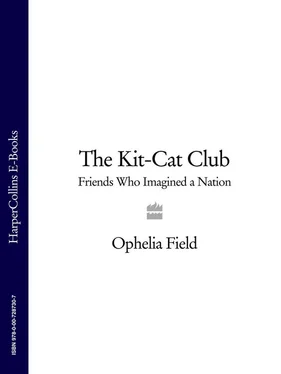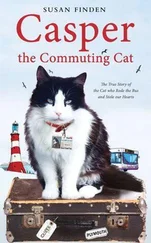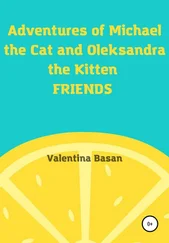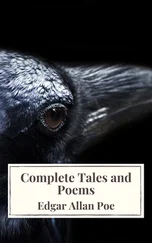In April 1697, Congreve was further made one of eleven managers of the Malt Lottery, a government scheme for raising duties on malt used for brewing and distilling. The following month, Montagu added yet another post for licensing hawkers and pedlars. All this added up to a secure but still modest income for the playwright. Congreve's work in progress that winter was a poem, ‘The Birth of the Muse’, which would be dedicated in gratitude to Montagu, ‘by turns the Patron and the Friend’, when Tonson printed it the following year. 17
Congreve's involvement made Montagu into a ‘great favourer’ of Betterton's new theatre company, in preference to the United Company at Drury Lane. 18 Though the two companies' rivalry was never partisan, both being essentially Whig, the Kit-Cats clearly backed the new house at Lincoln's Inn. Montagu, who, like Tonson and Somers, had taken a sudden interest in Vanbrugh's career after the success of The Relapse the previous winter, saw Vanbrugh's second comedy, The Provok'd Wife , in manuscript and persuaded (perhaps paid) the playwright to adapt it to better suit Betterton's company. For Vanbrugh, this was a smart move, as he now had access to a more talented cast: The Provok'd Wife 's portrayal of marital misery was brilliantly brought to life by Mr Betterton, now in his sixties, and the ageing actress Mrs Barry. Bracey played Belinda.
In 1697, therefore, Congreve and Vanbrugh were showing their work on the same stage. They avoided direct competition thanks to the fact that Congreve produced a tragedy instead of a comedy for the same season as Vanbrugh's Provok'd Wife . Congreve's tragedy was The Mourning Bride and, as usual, the lead role was written for his beloved Bracey. Both Vanbrugh's comedy and Congreve's tragedy were hits, with the playhouse ‘full to the last’. 19 When his plays gained universal applause, Vanbrugh, flamboyant and sociable, relished the attention. Congreve pushed himself forward in less obvious ways: when he put his name as author on a playbill in 1699, Dryden remarked that this was ‘a new manner of proceeding, at least in England’. 20
A contemporary critic said Vanbrugh's writing seemed ‘no more than his common Conversation committed to Paper’. 21 This is tribute to the artfulness of 1690s conversation as much as to the seeming artlessness of Vanbrugh's writing, and if conversation was an art form, the Kit-Cat Club was its medium—the reality that Vanbrugh and Congreve refined and amplified. Indeed, their shared love of writing in naturalistic speech explains their general preference for comedy over tragedy, a genre in which more formal verse was expected. The playwrights' writing methods, however, were stark contrasts: while Vanbrugh rapidly churned out ‘new’ plays translated from classical or French sources, Congreve wrote and revised laboriously, relying on original if convoluted plots.
The surprising absence of reference to one another's work in their critical writings, and the fact that Congreve's library did not contain a single Vanbrugh play when it was sold after his death, suggest rivalry between the two men. On the other hand, there are generous compliments to Vanbrugh's ‘sprightly’ talent in two anthologies by Congreve's close friends, 22 and Congreve would have a middle-aged portrait of himself painted reading a Vanbrugh play.
Congreve explained to an old friend from Kilkenny School, Joe Keally: ‘I need not be very much alone, but I choose it, rather than to conform myself to the manners of my Court or chocolate-house acquaintance.’ 23 It was as if Congreve found adopting his public mask—his Kit-Cat persona as a ‘man of wit’—almost an insult to his intelligence; as if he hated to feel like a trained monkey brought in for the amusement of his literary patrons. Congreve's plays contain characters that can be viewed as at least partial caricatures of the less intellectual Kit-Cat patrons: in The Double Dealer , for example, Congreve presents the peers of England as sexually and intellectually impotent. Their pretensions as wits and writers are the idle pastimes of trivial minds, and Lord Froth fancies himself a theatre critic who thinks he will look more knowledgeable if he does not laugh at a play's jokes. In Love for Love , Sir Sampson mocks the servant Jeremy for having ideas above his station, yet Jeremy is better educated than a ‘gentleman’ named Tattle, who thinks the head of the Nile is a Privy Counsellor. Such were the literary messages by which Kit-Cat authors began to detach class from birth, and pin it more squarely on a person's taste and education. It was not a new comedic device to show servants sharper than their masters, but this time it had a fresh and more pointed cynicism. At the Kit-Cat that evening in winter 1697, however, the dukes and earls seated around Congreve detected no disdain or boredom lurking beneath his indulgent smile and patient remarks: ‘No one, after a joyful Evening, can reflect upon an Expression of Mr Congreve's that dwells upon him with pain,’ Steele later recalled. 24
The end of the meal would have been signalled by Tonson, as Secretary, or by Somerset, as highest in rank, throwing down his napkin and calling for a larger washbowl. Then, after the board was cleared of the final course, the servants brought ‘every man his bottle and a clean glass’, 25 and Tonson turned the diners' attentions to the only official order of business: the nomination of ‘beauties’, and the recitation of light verses in their honour. Tonson, as one of Prior's poems put it, ‘bawls out to the Club for a toast’. 26
As a drinking and dining society first and foremost—Addison called it a club ‘founded upon Eating and Drinking’ 27 —the Kit-Cat Club was contemporaneous with another known as ‘The Knights of the Toast’ or ‘The Toasters’. These Toasters raised their glasses to nominated ‘beauties’ among the ladies of the town, without, it would seem, any ulterior political or cultural motive. They were just men who fancied themselves gallant connoisseurs of fine wine and women, as mocked by a 1698 ballad depicting them flirting outrageously during a church sermon. At least seven men were members of both clubs. Many Toasters never joined the Kit-Cat Club, however, disqualified from the latter by their Toryism.
Steele wrote the most famous description of how toasting a beauty worked:
The Manner of her Inauguration is much like that of the Choice of a Doge in Venice; it is performed by Balloting; and when she is so chosen, she reigns indisputably for that ensuing Year; but must be elected anew to prolong her Empire a Moment beyond it. When she is regularly chosen, her Name is written with a Diamond on a Drinking glass. The Hieroglyphic of the Diamond is to show her that her Value is imaginary; and that of the Glass, to acquaint her that her Condition is frail, and depends on the Hand which holds her. 28
A manuscript letter confirms that this passage describes not only the Toasters' but also the Kit-Cats' ritual and that a complimentary verse on each toasted beauty was engraved beside the name on each glass. 29 No glass complete with lady's name or verse appears to have survived the centuries. (The glasses today known as ‘Kit-Cat’ style are erroneously named and date from the later eighteenth century.) That the toasting was in absentia allowed toasts to be made by married men, to married women. A Tory authoress named Mary Astell sarcastically rebuked the Kit-Cats for how their toasting could bring respectable society ladies unwanted attention: ‘When an Ill-bred Fellow endeavours to protect a Wife, or Daughter, or other virtuous Woman from your very Civil Addresses, your noble Courage never fails of being roused upon such great Provocations.’ 30
The only two essential qualifications to be a Kit-Cat toast were beauty and Whiggery. Many women were chosen as toasts purely as compliments to their fathers, uncles or husbands. Many were girls in their teens, toasted unashamedly by middle-aged men in a period when the legal minimum age for marrying or having sex with a girl was ten, and when a male reader could write a letter to a paper protesting that it was a gentleman's natural privilege to fornicate with ‘little raw unthinking Girls’. 31
Читать дальше












